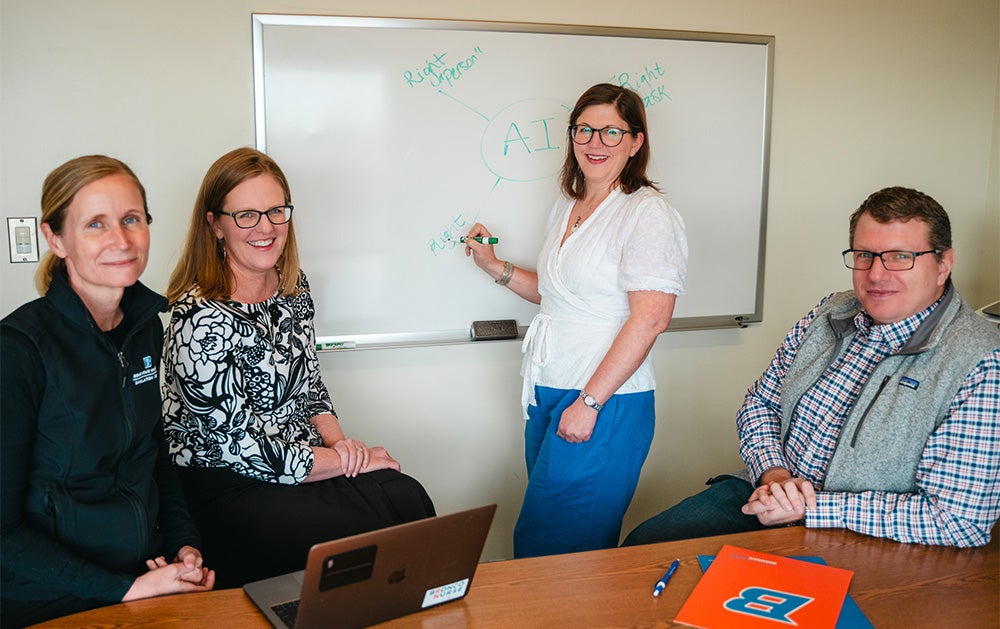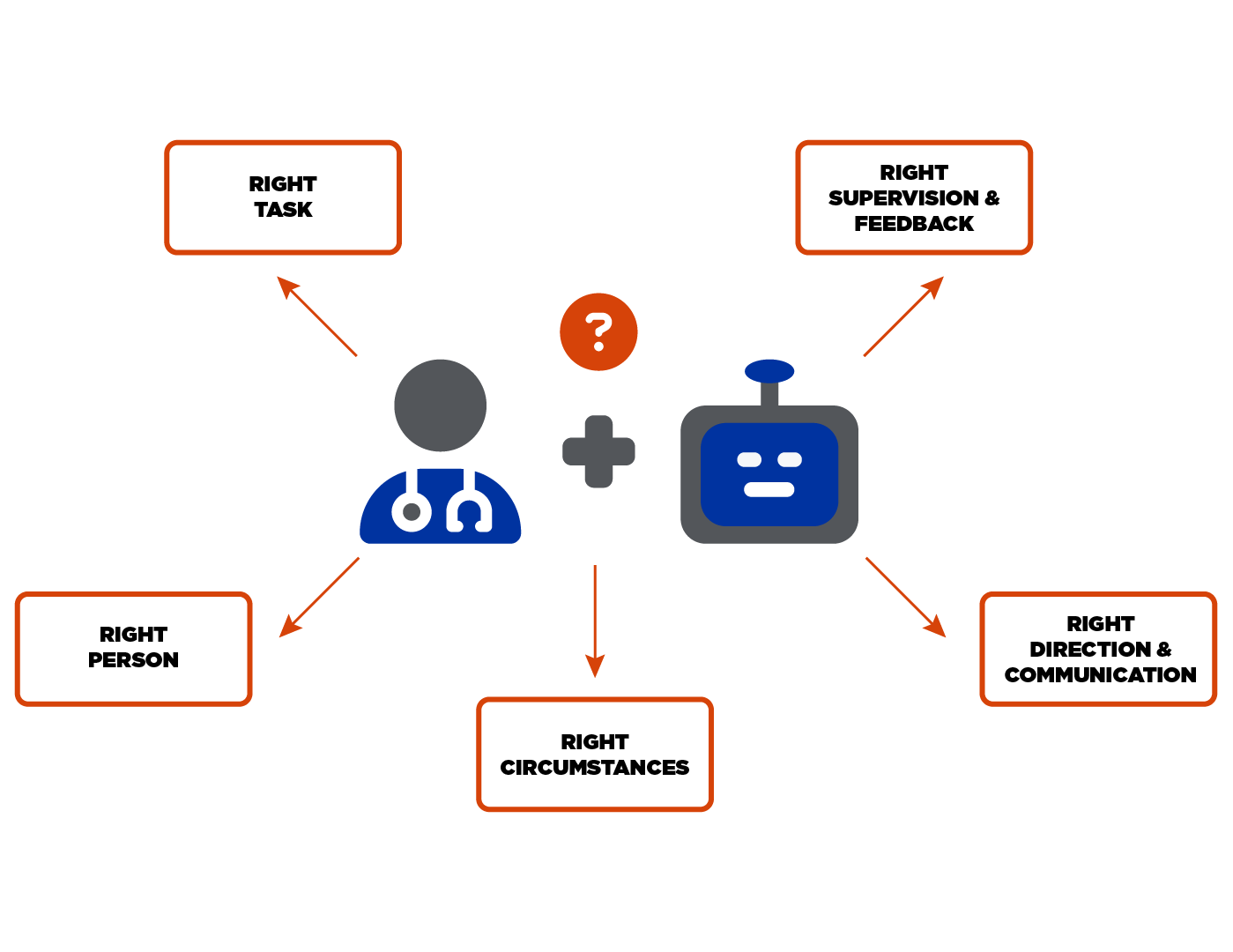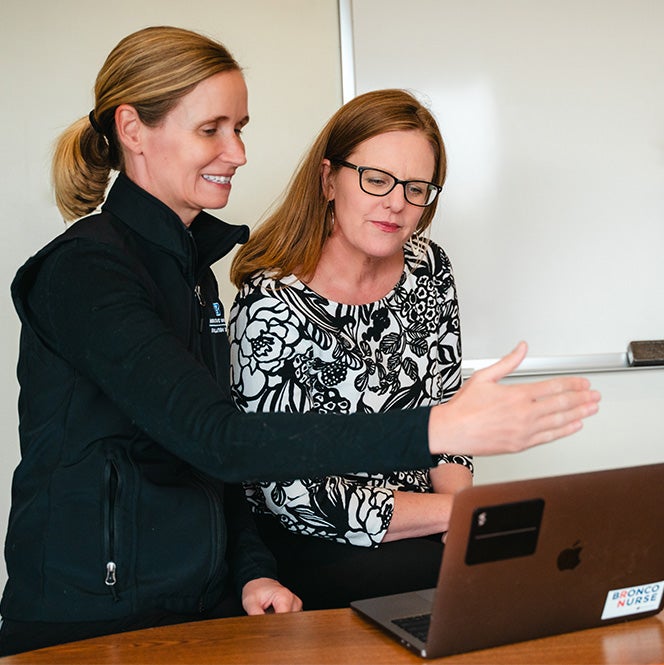A team of nursing researchers are embracing the artificial intelligence tools of the future and helping other educators see how they can be the tools of today.

Professor Kelley Connor, Associate Professor Jenny Alderden and Assistant Professors Jason Blomquist and Sarah Llewellyn published their work on artificial intelligence in Nursing Education Perspectives, a bimonthly research journal of the National League for Nursing. This publication gives the team’s work nationwide reach.
Their cutting-edge project evaluates appropriate ways to incorporate large language models – such as Chat GTP – into nursing education through a delegation framework.
What is the framework?

Nurses learn the delegation framework to enhance accountability and responsibility in their decision-making processes. From a non-nursing perspective, Blomquist describes the model as a decision-making tree.
“You’re deciding: in this particular moment for this particular task, ‘Is this the right tool or the right person?’ and then how do I make sure that if I am saying you can do this task, I’m following up and making sure it’s done correctly,” Blomquist said.
The strength of applying the framework to AI, Blomquist said, is that the framework requires supervision and closed-loop communication to successfully complete a task.
Increasing engagement in education
“I think our goal for the publication was to let faculty know that they’re probably going to need to teach students how to do it,” said Llewellyn. “And to not be afraid of it…and not necessarily embrace it fully, be skeptical of what it can do and what it can’t, but that’s where the model comes in.”
The team emphasizes the importance of teaching students how to use AI appropriately “because that’s part of learning in a college setting, it’s knowing how to use your tools and use them correctly and know what we use as professionals,” Llewllyn said.

The use of large language model technology in educational contexts is heavily debated, often argued to be another form of cheating. But industry standards for educating nurses includes concepts of information and communication technology.
Blomquist explained that many headlines in healthcare these days mention AI tools for providers, but few address their impact on nurses. Since nurses are on the front lines of patient care, they need to be able to contribute to the conversations and development of the technology.
“None of us are going to be computer scientists, but we should have some basic knowledge so that we can know how to engage,” Blomquist said.
Preparing students for the workplace
Preparing student nurses to use large language models appropriately only enhances their workforce readiness, since healthcare facilities are steadily increasing the amount and types of AI in their workflows.
The team readily acknowledges AI assistance as the future reality of healthcare workplaces. Similar to their own experiences in the early 2000s switching to digital health records, they want their students prepared to thrive in a new technological landscape.
“We’re trying to educate nurses for five, ten plus years from now to think through how to use this technology that doesn’t exist today, and be prepared for that,” Connor said.
“And regardless of what tools come out, the framework still works: is this the right tool to do the right task at the right time with the right supervision?” Blomquist said.